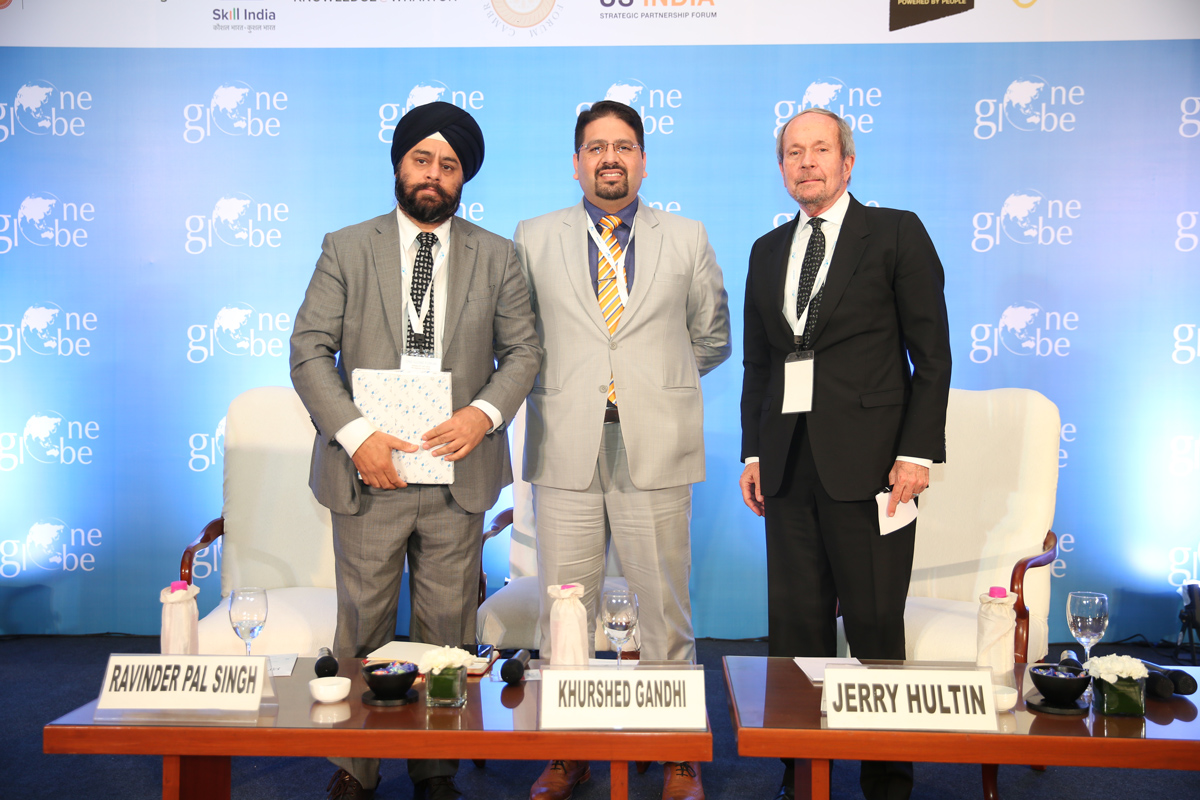Technology and innovation are the keys to building smarter cities
Posted by Admin on September 06, 2018By: Kausalya Saptharishi

Are our cities sufficiently prepared for the future? Are they smart enough to keep pace with a swelling population, technological advancements, evolving infrastructure capabilities and ace every other parameter that would make them sustainable in the long run?
This was the theme of discussion for the panel titled “Urban Innovation in Building Smart Cities: A Global Perspective” that was held on Day One of the 2018 edition of the One Globe Forum at New Delhi.
“I work a lot in smart cities around the world. What you’re seeing both in India and around the world is innovative indication that cities are getting smarter, they are beginning to use technology in a real good way to make people’s lives a lot better,” said Jerry Hultin, Chairman, The Global Futures Group, and the moderator of the panel.
Fellow panellist, Ravinder Pal Singh, Director, Digital Cities & Mega Projects, Dell EMC India, was of the view smart cities are not a recent phenomenon. He said, “Smart cities with a digital infrastructure have been there for the last 14-15 years.There has always been this discussion about whether we are doing enough, are we on the right path, and somebody actually mentioned that smart city is dead.” He clarified that smart cities are actually thriving and cited the example of Nusajaya in Malaysia that transformed from being a nondescript poverty-stricken place to emerge as one of the most iconic smart cities in the world. Since Singapore, which is adjacent to Nusajaya, had reached a saturation point in terms of traffic and vertical growth, the latter was established as a world class smart city, gradually attracting the best talents to live there. Within three years, Nusajaya became a coveted real estate proposition and created a win-win situation for people who enjoyed living there and working in nearby Singapore.
Mr. Singh also stressed that technology was going to be the primary driver of future smart cities, especially in areas such as traffic management and parking. He argued, “You can put a lot of lights, cameras and policemen, but have you solved the traffic problem? No. But the moment you talk about technology, it is about video analytics, automatic challans, which is happening in a couple of cities now.”
He added that if cities need to evolve, they must find innovative solutions to tackle problems like lack of parking spaces by tweaking local laws to align with the larger mission of building smart cities.
Khurshed Gandhi, Managing Director, Consulting Services, Cushman and Wakefield India, had a different take on the issue. He said, “Let’s be honest. Our cities today are not smart, not even borderline smart. And the problem therein is that they have not been designed for future growth. In India and wherever in the world, we are not planning for the future. We plan for the now and for the short-term.”
However, Mr. Gandhi concurred with Mr. Singh that technology is key to drive change both globally and in India. But first, a proper framework should be in place for technology to succeed in smart cities. He said, “It has to be a wholesome and a totally integrated solution. We can’t just mandate if we don’t have a broad framework to drive change. If we don’t drive change in India and globally today, we miss the best chance of pushing this country into becoming a superpower.”
The panellists were of the unanimous view that collaborative coworking spaces is the best way forward for creating a new work culture in smart cities. Mr. Hultin said, “It’s a very interesting urban phenomenon and innovative. In New York, IBM is moving people out of their corporate headquarters Upriver, a very idyllic place, and taking offices in WeWork in Manhattan, because they want to be where the action is.”
Mr. Gandhi cited the example of how Amazon has also opted for taking up coworking space at CoWrks in Mumbai. He said, “The economics of this is still in the process of working up to the optimum model for the Indian context, but there is true merit in it.”
Mr. Singh said that citizens should not depend on only the government to revolutionize smart cities but must themselves be active participants in the movement. He also emphasized that smart cities must be built on the premise of a viable economic model to remain sustainable. He said, “Until we show the money to everybody, smart city is not going to be a reality.”
The panellists agreed that tactical solutions and solving simpler problems across the board, is the need of the hour. Mr. Gandhi shared the examples of Barcelona that uses waste to create energy and of Norway—a country that’s serious about producing renewable energy—that extensively uses solar power. He averred only such ecologically and economically sustainable models will come to shape the future of smart cities.
When an audience member raised the concern of finding long-term solutions to transportation problems, Mr. Singh said, “The main problem in a country like India is the reliability, feasibility and accuracy of public transport.” He was of the opinion that ride-sharing apps like Uber and Ola would gradually lead the public transportation network to also become more predictable and streamlined.
He summed up on an optimistic note: “For those who question the future of smart cities, we are a very complex country and are making hundred cities in one go. It’s not a simple thing to do, with a huge population, with complexity in politics, bureaucracy—I firmly believe it’s just a matter of time before we see these cities coming up.”








